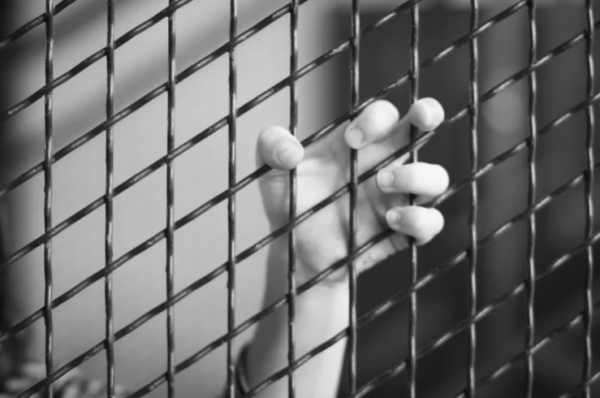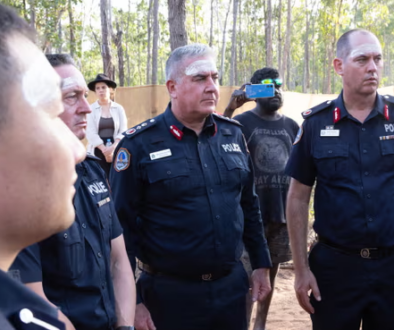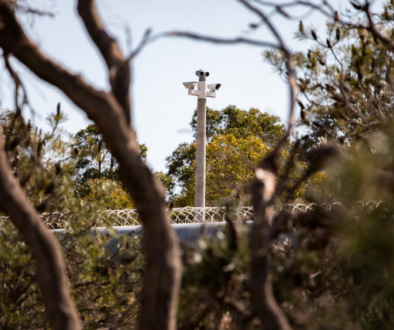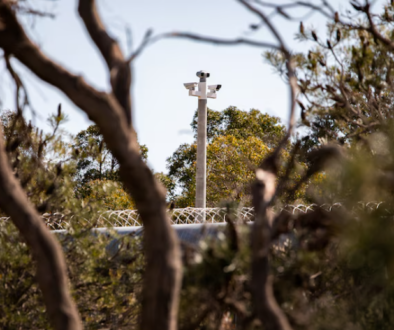The uninterrupted failure of Banksia Hill – and what WA should do about it
When I think of Banksia Hill children’s prison, I wish I could speak of prayer. But I only see despair.
The uninterrupted failure of Banksia Hill since its establishment in 1997 has culminated in the abomination of the segregated holding pen of Unit 18 in Western Australia’s notorious maximum security adult prison of Casuarina, and the death of a teenager who self-harmed there.

Unit 18 is the evidence of decades of failures by one government after another, and of their bastions the departments of Justice and of Corrective Services, which should be adopting the proven restorative works of the Scandinavian and Dutch programs that turn lives around, address trauma, dramatically reduce offending, make society safer and fairer for everyone.
Instead I find myself writing again of our most vulnerable children and youths at Banksia Hill, a brutal corral of human misery.
I am retired but still volunteer with many youths who were the children of this prison, mentoring them to help them not return.
Nearly half the children jailed there have been removed by the state from their families or carers. Their “parents” are now the state. These children were born into disadvantages and sufferings unimaginable to most.
Of the other half, most have at best weak safety nets, one or both parents dead or in jail themselves. The extended families which may care for them are exhausted and unsupported, caring for far too many children society has betrayed.
These children have it worse than did their parents, and if these children are left likewise unsupported, their children come the day will have it even worse.
When will our governments and the instruments of the state speak of compassion, of love, of understanding and of fairness? When will they speak of nurture, the restorative and therapeutic?
It is my experience that the deeds of these children are cries for help or worse, of cold surrender.
It is not enough to just argue to raise the age of criminal responsibility to 14 years from its current 10. We must save these children, improve their lot, believe in them until they believe in themselves, to change the direction of their life. We must ensure they do not languish lifelong in ruination and die decades before their time.
There are those who believe the nightmare of Banksia Hill is a combustion of aberrant First Nations youth. I reject this. Banksia Hill is not a Black problem. For the record, the tragedies and travesties of Banksia Hill are not Black, Brown or White problems. Banksia is a systemic problem. A problem made by governments. There is nothing rehabilitative about Banksia. The disproportionate number of First Nations children jailed should not disguise the failures of the state. Homelessness is caused by governments not building social housing. Similarly, the WA government does not invest in nurturing our state’s most vulnerable.
If there were genuine diversionary programs for these young people, many of whom are homeless, transient or orphaned, the Children’s Court would be referring children to such programs. Governments boast of mythical diversionary programs but come the day children front the court, judges have nowhere to turn.
Where children can be released, we must support them with intensive psychosocial outreach.
WA needs to urgently reform child bail laws and where children can be released, present more options for them to remain where possible with families, identifiable responsible adults, or accessible, well-resourced, secure, community-based facilities.
Where children must be remanded to secure facilities, they must be tiered by age-bracket: 10-12 years, 13-14, 15-16, 17-18. In general, the content of nurture is age-sensitive. These secure facilities must be places where one-on-one support is guaranteed, as in familial settings, from seasoned experts who build rapport.
Instead, of these forgotten children of Banksia, about 70 per cent will finish up incarcerated as adults.
Of those segregated at Unit 18 at the adult Casuarina Prison, I estimate nearly all will be incarcerated when adults. This is an indictment of us. I know most of the children of Unit 18. They are not monsters. They are people who were denied the beginnings most of us take for granted.
For years, I begged state governments to allow high calibre wide-remit restorative models into Banksia. I won the support of former minister for corrective services Fran Logan, but the battle to get us in was arduous. Mr Logan retired prior to last year’s election.
However, when eight services ceased at Banksia during the statewide coronavirus quarantine, then-Department of Corrective Services commissioners summoned me and a colleague, Megan Krakouer, to Banksia for two months.
The next morning, I said to Megan and another colleague, “We may never get this opportunity again, so let us do everything we can to assist as many children as possible.”
We focused on the female detainees, aged 11-18. When we commenced at Banksia, the female detainee population numbered 18. I applied to the Children’s Court to release as many as possible and it did. We provided substantive post-release support. Within eight weeks we had more than halved the female detainee population to seven detainees.
We were not miracle workers, but three seasoned mentors, who showed what psychosocial support looks like.
If Banksia has a population of 100, deploy 100 nurturers and you will see the reoffending drop.
I am now blocked by the state government from working in state prisons because I helped galvanise the class action on behalf of former and present detainees. Testimonies to me and my colleagues, from hundreds of former and recently released Banksia detainees describe the same fails and horrors.
We’ve registered more than 700 souls, with thousands more to come by the time of a court ruling.
A win would ultimately compel governments to humane ways forward.
There are 17 children’s prisons Australia-wide.
If we win in the courts, precedents will be set for changes and reforms not just in WA, but which every state and territory because we shone the light on Banksia Hill.
We must not give up. We must fight like never before.
Unit 18 must be abolished.
Banksia Hill does not need to be demolished, but it must not be a prison. It can be a place of transformation, where seasoned mentors nurture children in age-appropriate ways, one on one.
A place for the children of Perth, not a place uprooting children from way outside the city.
Where sections 50(D) and 51 of the Equal Opportunity Act are recognised and First Nations seasoned professionals are employed to achieve proportional workforce parity.
We must introduce Medicare and access to the NDIS to prisons. There is no greater advocate to an incarcerated individual – particularly a child – than a doctor. Medicare can ensure bulk billing physicians in every prison.
States and territories must fund community-based age-tiered well-resourced facilities, with a psychosocial onus, and respectable quality bedrooms for our neediest children, not grotesque stir-crazy jail cells.
With post-release, there must be wide remit 24/7 support services – torch-bearers to improved lives.
Imperatively, from a triage-based needs basis, there must also be aftercare critical assists, emergency response outreach teams, and humane short stay respites.
The social return will be high.
We must recognise the disproportionate rate of First Peoples children being jailed as the culmination of the sins of a nation. Understanding the unfairness is the first step to our atonement.
Give them the chance they’ve never had – invest in the children and not in their incarceration.
Contact us
Please provide a brief description of your claim.



